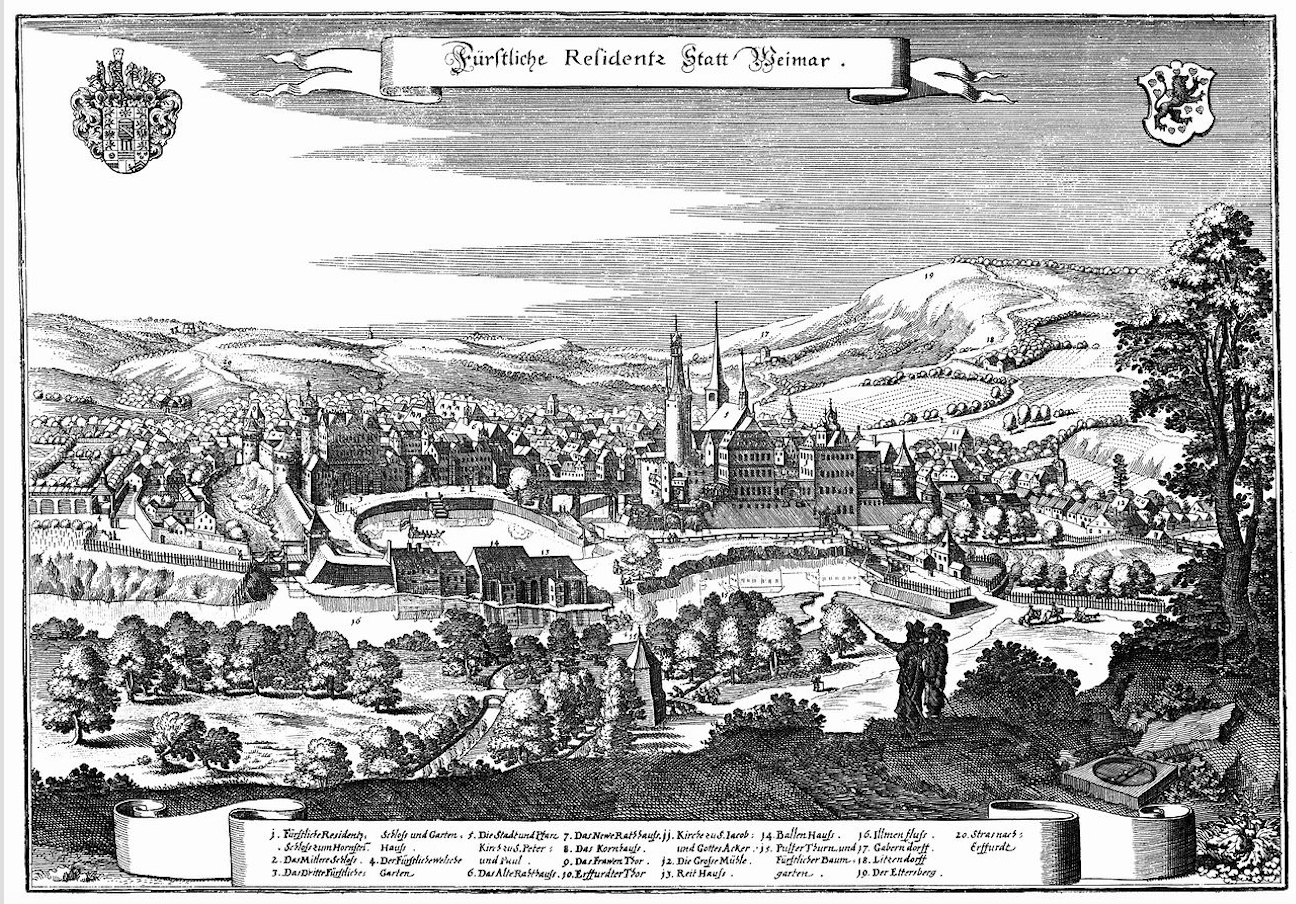Florentine 'spy' uncovered as designer of historic German palace by St John's researcher
“In a time before the rapid dissemination and easy accessibility of news, strategically placed individuals would have been highly valuable to rulers as a means of finding out what was happening abroad"
A palace in Germany designated as a UNESCO World Heritage Site was designed by a Florentine architect thought to have been a secret informant for the Medici, a powerful Catholic Italian family – according to new research.
The Weimar Residenzschloss was originally built at the end of the 10th century and until the 18th century it was the official residence of the Dukes who ruled Saxe-Weimar – a large territory in the historic region of Saxony, now present-day Thuringia in Germany.
When half of the palace was destroyed in a fire in 1618, the palace was rebuilt in a grand Italian style during a period of political and religious unrest in the region. Historians thought it was the work of master-builder Giovanni Bonalino. However, analysis of letters discovered in Florence by Davide Martino, a first-year PhD student in History at St John’s College, now suggest it was designed by Costantino de’ Servi – an Italian court artist, architect and informal diplomatic agent.

During his research for his MPhil on Early Modern History at St John’s in 2016, Martino analysed letters from de’ Servi and found a description of a new palatial design he had been working on. His grandiose plans for the half-burnt remains of medieval and Renaissance buildings turned the palace into a rectangular fortress.
They included a ballroom, an arsenal, a mint, stables, a church and workshops. When Martino encountered the unsigned design for the Weimar Residenzschloss, historically attributed to Bonalino, he realised it was nearly identical to the description in de’ Servi’s letters.
Martino’s findings are published today (22 June 2020) in Zeitschrift für Kunstgeschichte – a German art history journal. Martino also uncovered a trail of evidence pointing to de’ Servi’s activity as a secret political agent. He explained: “Costantino de’ Servi spent a lot of time in Prague, London, The Hague, and other important foreign courts, always writing home to update Florence on the latest events.
“In a time before the rapid dissemination and easy accessibility of news, strategically placed individuals would have been highly valuable to rulers as a means of finding out what was happening abroad.”
When the palace was devastated by the 1618 fire, it was a time of great political and religious tension in the Holy Roman Empire and the region was on the cusp of war. A Protestant uprising in Bohemia led to calls to oust the ruling Catholic family, the Habsburgs. When Duke Johann Ernst I wanted the Weimar Residenzschloss and court rebuilt in the highly fashionable Florentine style, he wrote to Cosimo II, the Catholic Grand Duke of Tuscany, to request that an architect was sent to redesign the palace. Cosimo II was concerned the Duke was siding with the Protestant cause and seized the chance to send de’ Servi as his informant.
Martino explained: “De’ Servi had previously demonstrated an ability to collect precious information and act as an informal diplomatic agent. In 1603 his artistic skill and talent as a portraitist meant he had been able to approach the secretive and secluded Emperor Rudolf II in Prague and later he gained similarly unrivalled access to Henry Stuart.
“Duke Johann’s request for an architect gave Cosimo II the opportunity to send a Florentine courtier and informant close to the Bohemian revolt’s epicentre.”
De’ Servi was able to get close to the Duke and in his letters back to Italy he recounts private conversations he had with him about military, political and religious manoeuvres. He tried in vain to persuade the Duke not to get involved in the conflict.

In a letter sent in September 1618, de’ Servi said he had warned the Duke, 'leave religion alone and you’ll see that you’ll be left alone by us Catholics, for we also love the freedom of state and preservation of our religion’.
Despite de’ Servi’s efforts, the Duke joined the Protestant cause and gave his military support to Elector Palatine Frederick V, who was later crowned King of Bohemia by the rebels. In 1620 the rebellion was crushed by the Habsburg family and the Duke was stripped of his title. His younger brother took up the Duchy and oversaw the completion of de’ Servi’s architectural plans for the palace.
In 1774 de’ Servi’s palace was also besieged by fire but the reconstruction was done largely to his design. Architect Johann Moritz Richter incorporated de’ Servi’s initial façade designs into the reconstruction and these, along with the palace itself, can still be seen today.
The Weimar Residenzschloss was considered of such historical significance that it was designated a UNESCO World Heritage Site in 1998.
Published: 22/06/2020